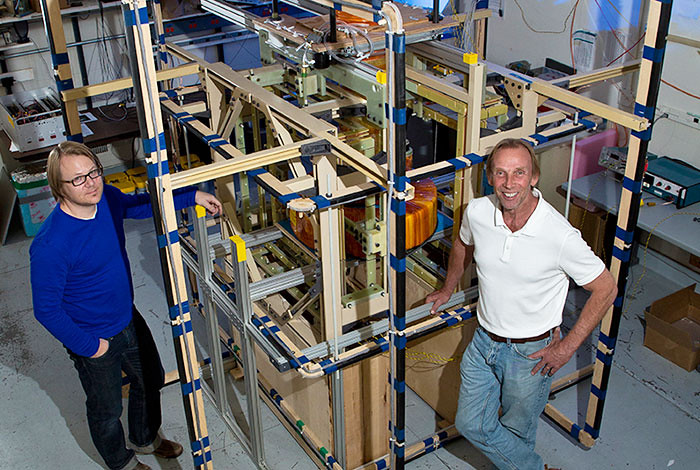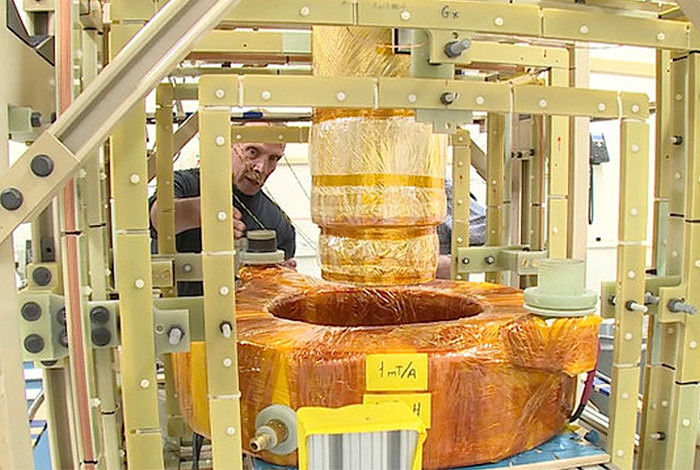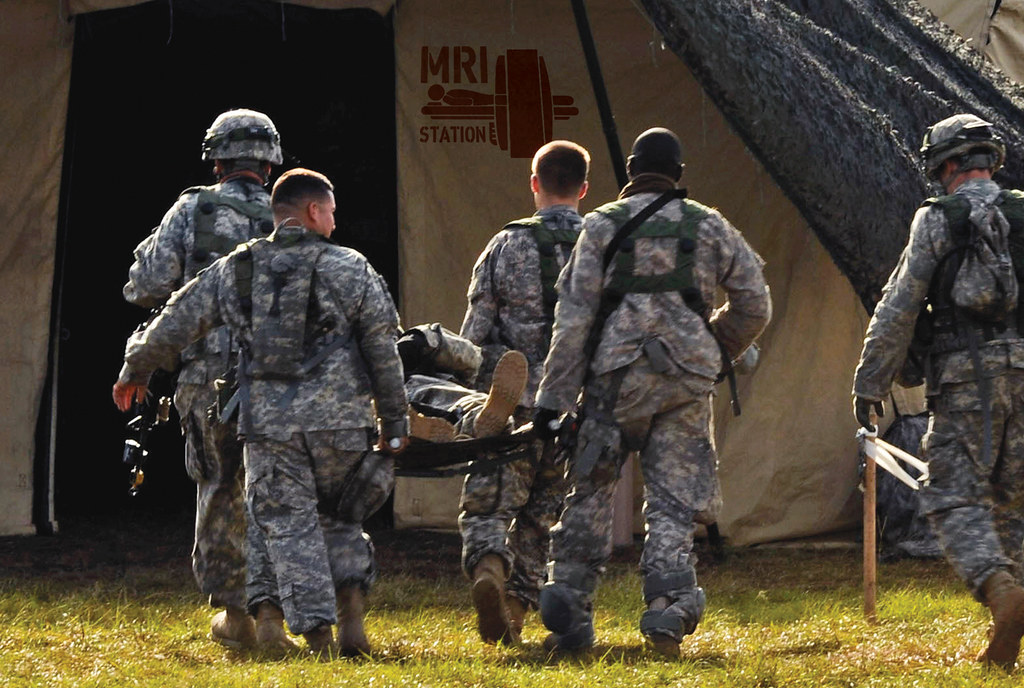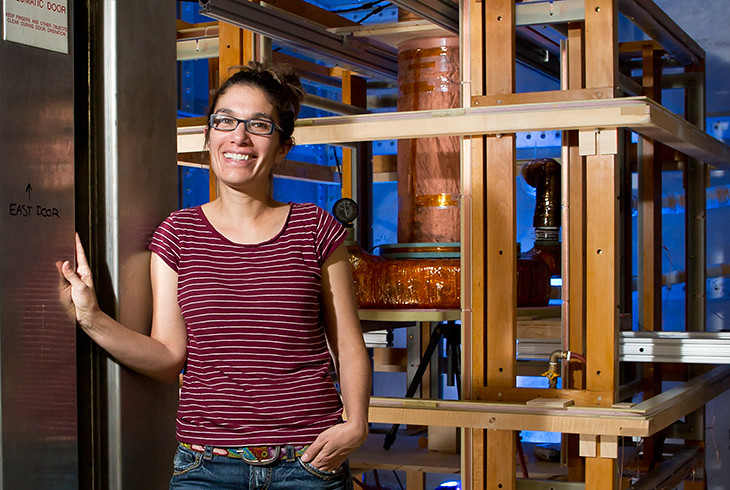Los Alamos’s portable MRI machine may benefit New Mexicans

Los Alamos experts, engineer Al Urbaitis and physicist Per Magnelind, have developed a smaller, less expensive MRI system to serve the battlefield setting and beyond.
New technology may serve New Mexico’s rural communities
Los Alamos National Laboratory scientists recently created a portable MRI machine for use in remote and underserved locations. Called the Battlefield MRi (bMRI), the machine uses ultra-low-field magnetic resonance imaging to create images of injured soft tissues, such as the brain.

bMRI engineer Al Urbaitis and the portable MRI device, which can be used in field hospitals for wounded soldiers or in remote settings in New Mexico and developing countries.
With further development and funding, the Laboratory is optimistic that the bMRI can be used to image soldiers wounded in the battlefield. The bMRI may also provide an MRI option for remote hospitals that lack large medical facilities, such as those in rural areas of New Mexico.
“With successful commercialization, remote New Mexico clinics and ERs could get easier access to MRI,” says bMRI physicist Per Magnelind, who notes that the production of this new technology could bring jobs to New Mexico.

Los Alamos experts have developed a smaller, less expensive MRI system to serve the battlefield setting and beyond.
Conventional “hospital-based MRI devices are big and expensive,” says Michelle Espy, the bMRI project leader. “[The bMRI is] a much lighter, less expensive, and low-power alternative.”
The bMRI’s ultra-low-magnetic fields are similar in strength to the Earth’s magnetic field. Extremely sensitive detectors called Superconducting Quantum Interference Devices (SQUIDs), allow the imaging at low fields to be achieved.
In December 2015, the bMRI was named one of the Top 10 Breakthroughs of the Year by Physics World, the member magazine of the Institute of Physics.

Project leader Michelle Espy stands in the doorway of her team’s MRI system.
Community Connections features news and opportunities that grow out of the Laboratory’s Good Neighbor Pledge: “To partner with our neighbors on strengthening math and science learning, diversifying the economy and expanding community giving in Northern New Mexico.”







